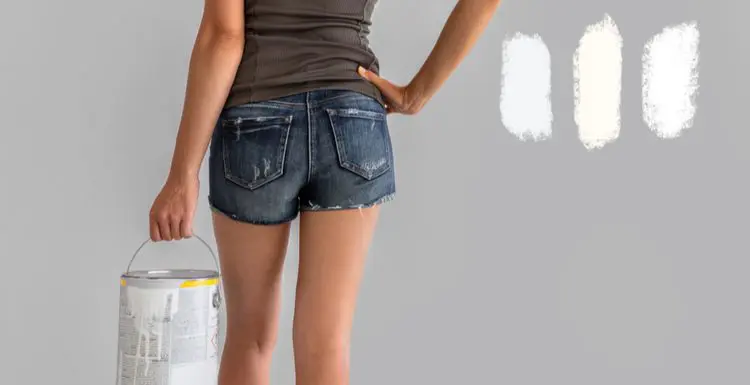What is eggshell paint, and why is it a better option? Are there some cases where it’s not a good choice?
If you’re asking either of these questions, you’re in the right place. Read on to learn all you need to know.
What Is Eggshell Paint?
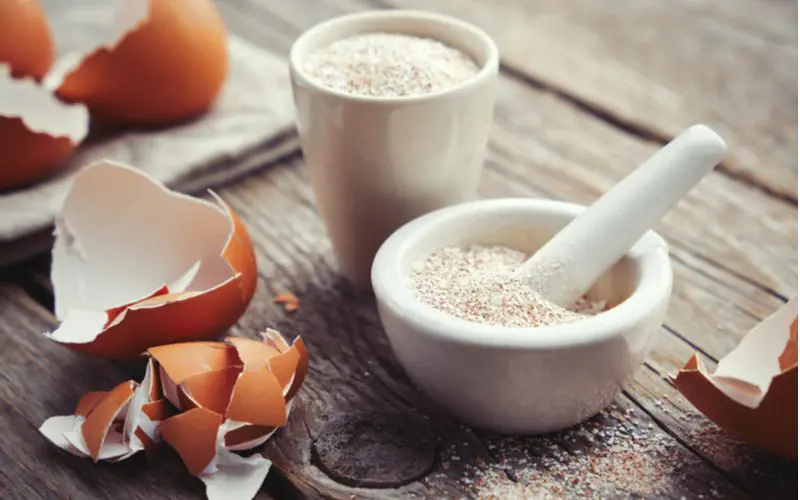
Chamille White/Shutterstock
If you are planning to paint a room in your home soon, the choices of products can vary depending on your needs. For example, you may ask, What is eggshell paint, and when should you use it in your home?
Eggshell paint is the gloss, or sheen, of the paint itself rather than the color. Eggshell falls between a satin and a matte finish to provide low light reflection between 10 and 25%, depending on the brand.
As a result, it’s an ideal choice for living rooms, dining rooms, bedrooms, and other home areas that do not see high traffic.
Now that you know what eggshell paint is, we’ll dive right into the nitty-gritty of this popular choice.
The eggshell finish isn’t for every situation, unfortunately. However, there’s a time and place when it’s beneficial. Read on for all the details about this popular finish.
Where Eggshell Falls Within the Many Available Paint Sheens
Eggshell paint is just one of the assortment of sheens you can find on your journey through a paint store. Here’s the range of gloss finishes, from dull to bright:
- Flat
- Matte
- Eggshell
- Pearl
- Satin
- Semi-Gloss
- High Gloss
Each of these sheens has its place in your home, where it’ll be ideal due to its light reflection attributes, durability, cost, and ease of use.
Consequently, a flat finish is the cheapest option but reflects the least amount of light in a room. On the other end of the scale, high-gloss paint will cost the most and will reflect the most light.
The Nitty Gritty of Eggshell Paint
Eggshell paint is a popular choice for both professional painters and DIY homeowners. Its name comes from the resemblance it bears to a chicken’s eggshell. The gloss is slightly flat, but it does reflect some light, although it isn’t glossy.
The low-luster eggshell paint creates a warm ambiance in a room, enhancing the paint’s color tones. In addition, it creates a smooth-looking wall that provides a soft glow to make a room feel pleasant and inviting.
The eggshell paint finish is quite durable, making it a terrific choice for many homeowners. In addition, the slight glossiness makes it generally easier to maintain than its flat or matte counterparts.
When to Use Eggshell Paint
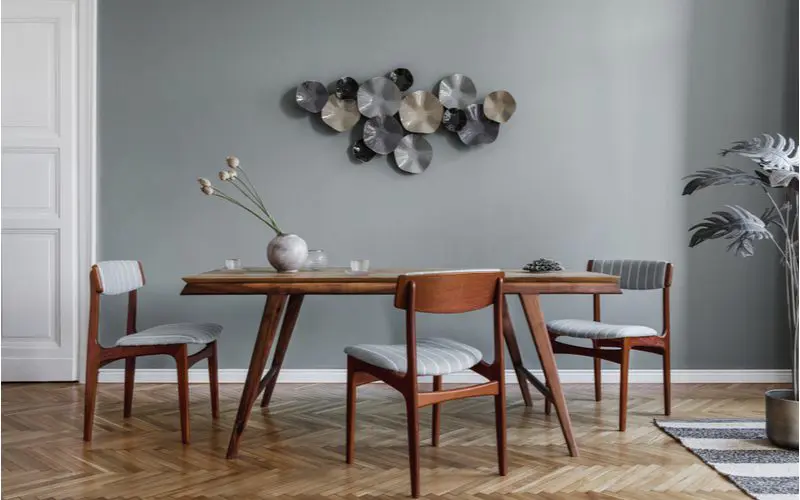
Followtheflow/Shutterstock
This paint finish is a terrific choice for many rooms in a home. There are several benefits to using eggshell paint in these areas:
- Dining rooms
- Living rooms
- Bedrooms
- Hallways
- Offices
- Basements
The soft radiance of eggshell paint can help create depth in a room by reflecting light and pulling colors from your paint.
When Not to Use Eggshell Paint
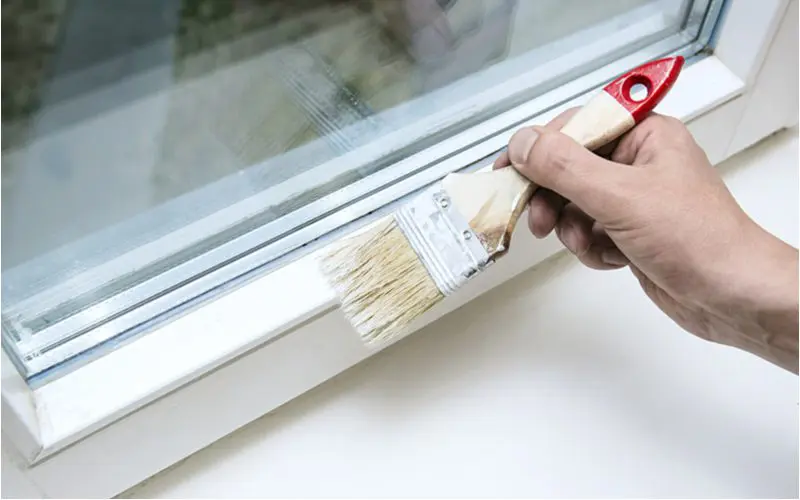
Alena TS/Shutterstock
Unfortunately, this finish isn’t suitable for surfaces that are typically flat and should not be reflective. Some of these situations where eggshell isn’t an ideal recommendation are:
- On ceilings
- Door frames
- Window trims
Ceilings require flat paint to mask any drywall imperfections, especially in corners or where panels join. In addition, flat paint finishes absorb light, which helps to hide any bumps, lines, or other imperfections.
Door frames and window trims should use high-gloss or semi-gloss finishes rather than eggshells so they can stand up to high traffic.
In addition, the glossiness of the finish creates a harder surface that resists scratches and chips more than an eggshell finish would.
Disadvantages of Eggshell Paint
The eggshell finish can scuff easier than other glossier options, making nicks and scratches more visible. Its vulnerability is due to the hardness of the paint once it dries.
Flat finishes are incredibly soft and susceptible to damage, while high-gloss paints are the most durable. Eggshell falls on the scale closer to flat and matte finishes, making it slightly stronger with its subtle glossy touch.
Because of the slight glossy element in eggshells, touch-ups can be more challenging to complete than flat or matte finishes.
The Benefits of Eggshell Paint
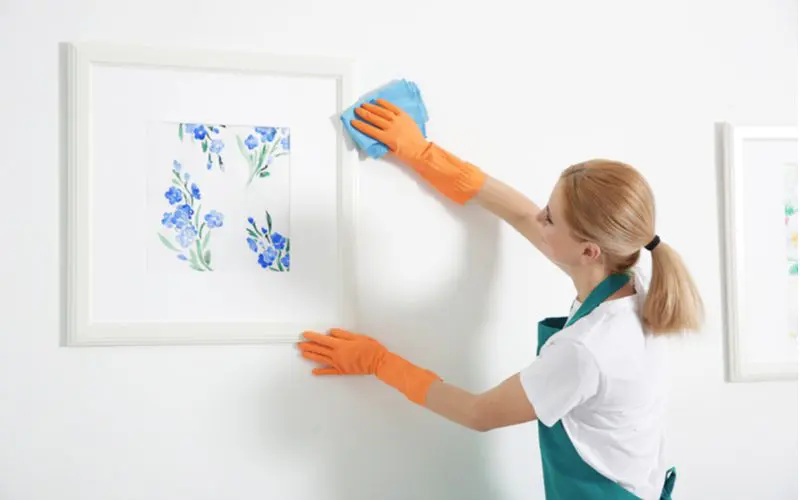
Africa Studio/Shutterstock
Eggshell is one of the more versatile paint finishes. You can find it in numerous places around your home or office, and for good reasons. These benefits include:
- Easy application
- Ease of cleaning
- Hides minor imperfections
- Cost-effective
- Versatile for alternative lighting
Easy Application
Eggshell paint is simple to apply when you are searching for a finish that you can paint yourself. You can use a knit roller cover or a shed-resistant woven alternative to give that professional look.
When applying multiple coats of eggshell paint, you will only need to wait one hour after the first coat to dry completely before applying the next one. You should wait two whole hours after a recoat to ensure it’s fully dry.
Ease of Cleaning
This finish is relatively easy to keep clean because of its stain-resistant properties. Additionally, the slight gloss of eggshell makes it more durable than flat or matte options, and it will not lose its color from cleaning over time.
Eggshell paint slightly hardens once it dries, making it more durable for regular cleaning than flat or matte choices.
Hides Minor Imperfections
Because of its closeness to a flat finish, eggshell paint will help hide some smaller imperfections that satin or glossy finishes will not. Its ability to bounce light throughout a room creates a softer glow that helps mask minor flaws.
This versatility is an excellent choice for dining rooms or living rooms where you want to take attention away from these slight imperfections.
Cost-Effective
Eggshell finishes will be significantly lower in cost than satin or high-gloss options when it comes to pricing. This affordability makes eggshells an attractive choice for many homeowners.
Although it will cost slightly more than flat or matte options, eggshell is a more durable selection, making it highly cost-effective.
Versatile for Alternative Lighting
The soft sheen of eggshell paint is very versatile. You can use higher lighting options to help pull color from your walls or tone down the vibrancy with dimmer switches.
Things to Consider
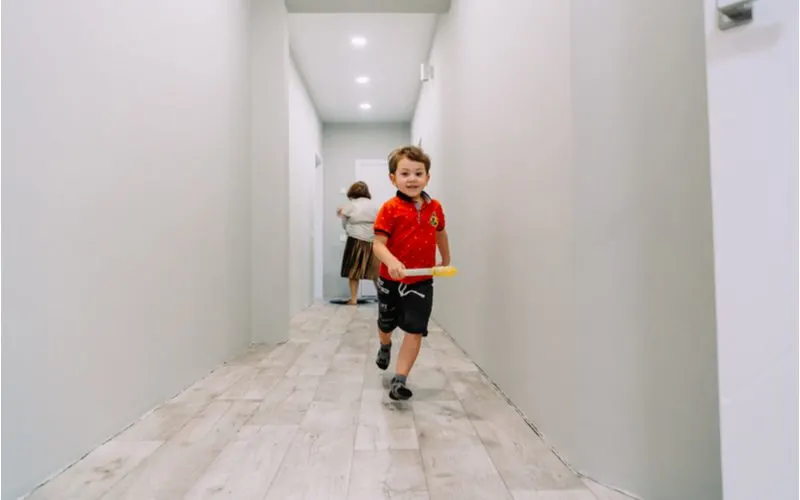
New Age Cinema/Shutterstock
Eggshell paint isn’t without its disadvantages, though. Although it is an excellent choice for many areas, some elements may sway your decision.
When determining the type of finish you want for your room, there are several things to consider. These elements include:
- Room size
- Lighting
- Wall texture
- Traffic areas
- Cleaning
Room Size and Lighting
The size of a room and how much natural light comes in can help you determine if eggshell paint is suitable for the situation.
Because of how it creates a soft glow, eggshell is ideal in rooms like bedrooms, dining rooms, and living rooms to make the occupants feel comfortable.
Wall Texture
If you have walls that require paint to hide imperfections, you may want to choose a finish that includes a higher gloss.
The eggshell finish is easy to apply since it does not show any paint overlap because of its slight flatness.
Traffic Areas
Rooms that will see high traffic, such as playrooms or mudrooms, may not be best suited for eggshell paint.
Eggshell works in rooms where traffic is moderate but not intense. Additionally, eggshell paint isn’t the easiest option to do touch-ups, making it more challenging to maintain in high-traffic areas.
Cleaning
How often you will be cleaning your walls and what type of dirt they regularly face will help you decide on your sheen.
Eggshell can work in many rooms, although it isn’t best for areas like the kitchen where grease can build up quickly.
Frequently Asked Questions
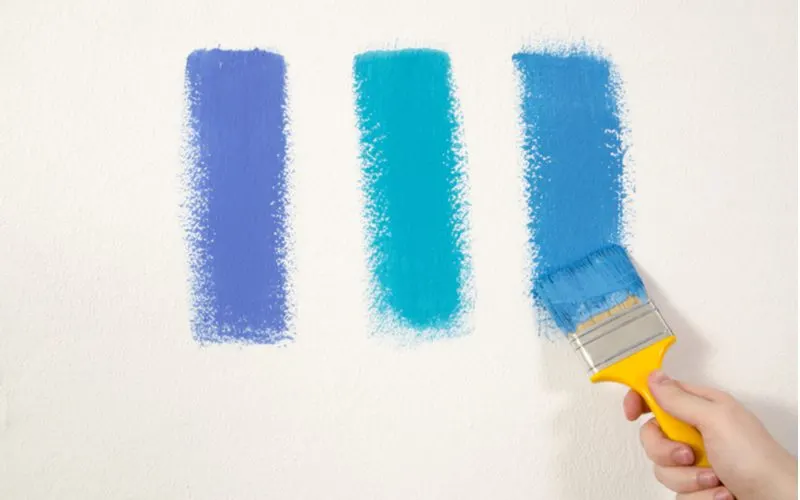
Phoenixns/Shutterstock
What is the difference between eggshell and satin paint?
The difference between these two paint finishes lies within their ability to reflect light and other essential factors.
Satin paint gives a higher sheen on the surface, which can draw attention to the wall. Eggshell provides a low luster glow that offers more depth and warmth to a room.
Can you use eggshell paint for wood surfaces?
Yes, eggshell paint can provide a superb finish for many wood surfaces, including skirting boards. In addition, it can help protect your wood accents from everyday wear and tear while providing a warm glow of light.
Is eggshell paint easy to clean?
This paint finish is relatively easy to keep clean, as long as you use a gentle approach. Because it has a slight sheen, it's resistant to absorbing stains and doesn't lighten from continuous cleaning.
This attribute makes it an excellent choice for areas like living rooms, dining rooms, and bedrooms.
Is eggshell paint better than semi-gloss paint?
When deciding on the finish for your paint, the better choice will depend on the room you want to use it on.
For example, eggshell paint can be better for homeowners on a budget or rooms where you want a softer ambiance.
So, What Is Eggshell Paint?
For anyone looking at the many paint finishes for their home, eggshell paint can be an ideal solution. This option is easy to apply, durable enough for common areas, and affordable for many homeowners.
The light reflection you will get from eggshell paint can provide a wonderful, comforting ambiance that ensures your family and visitors feel comfortable and welcome.

